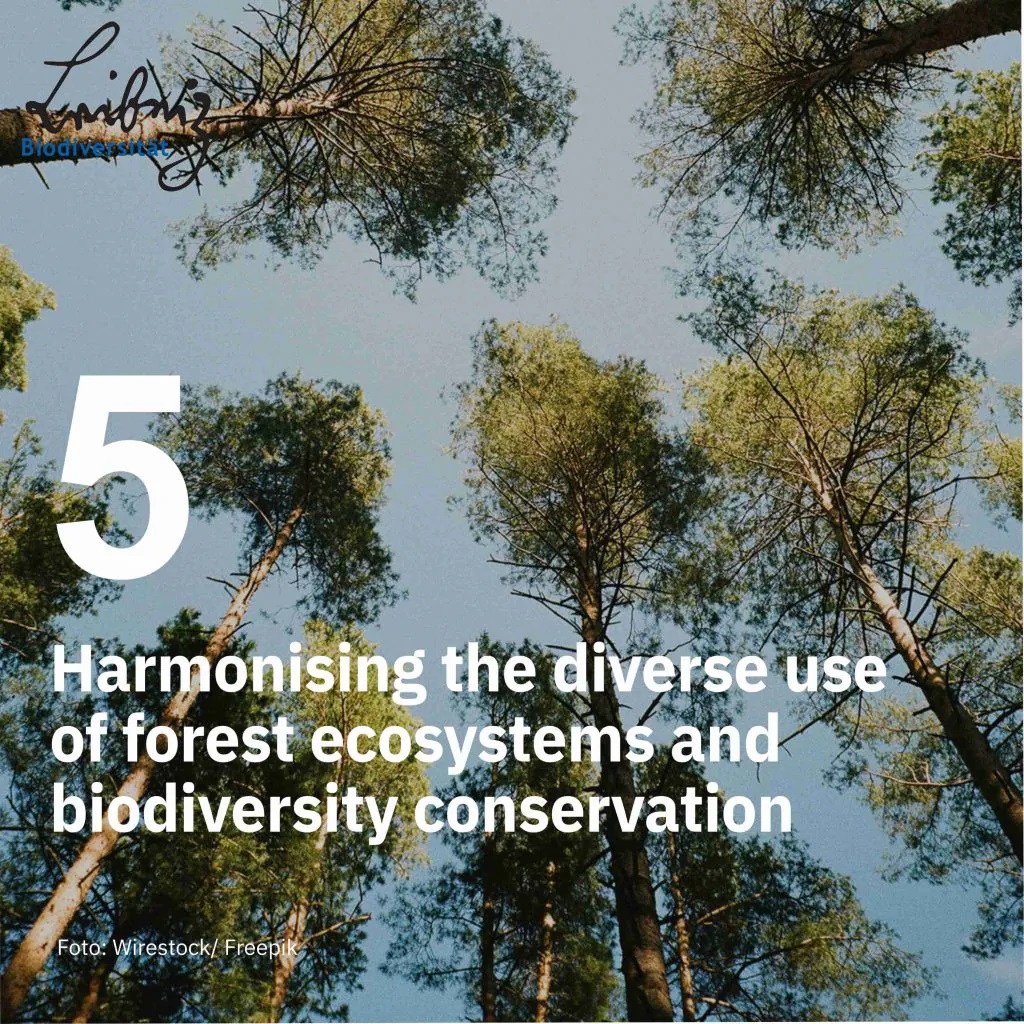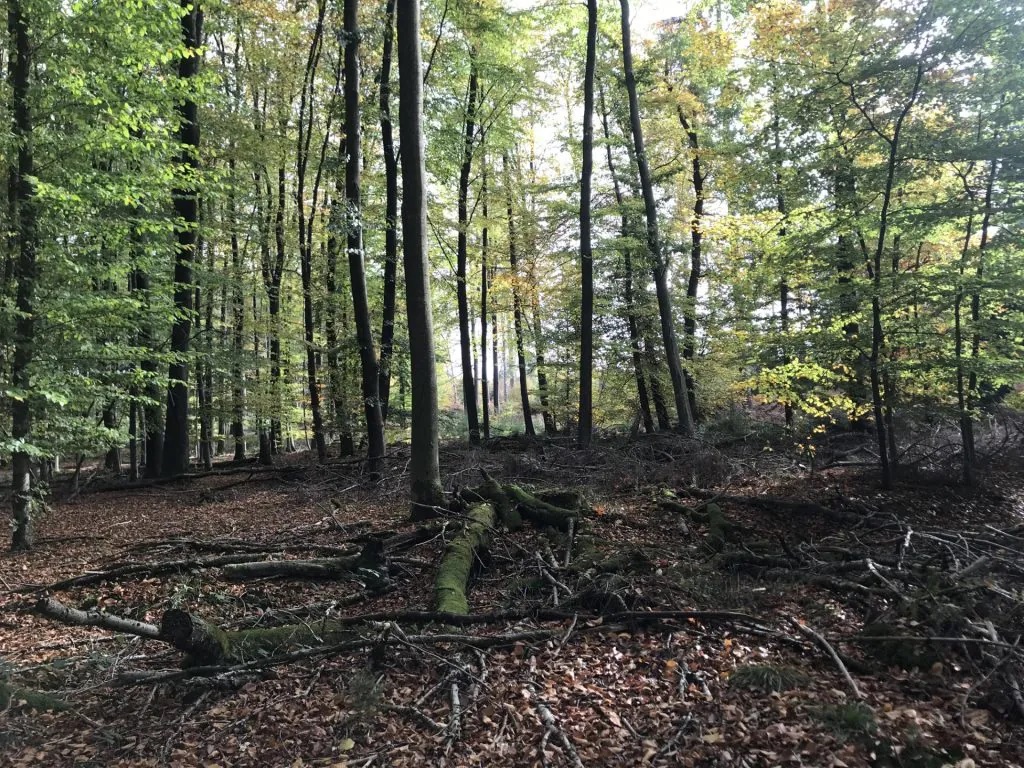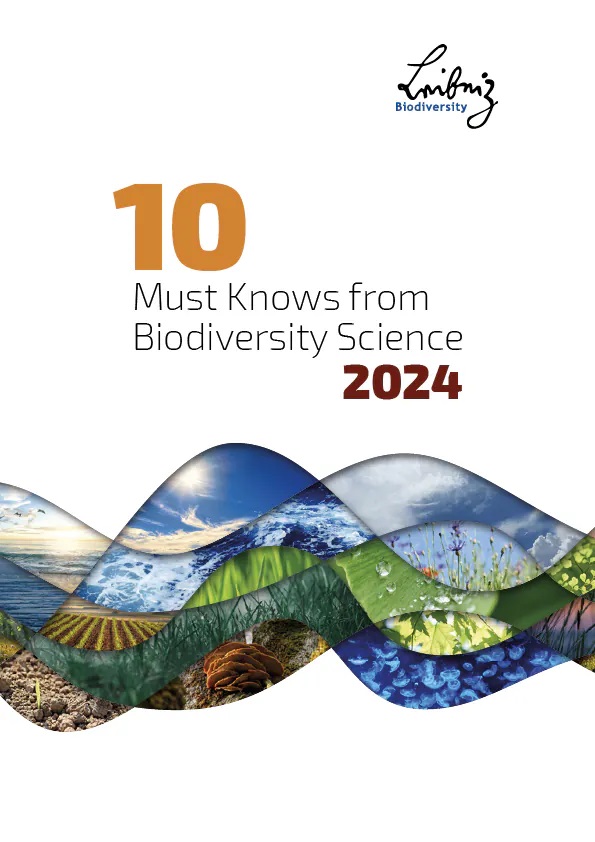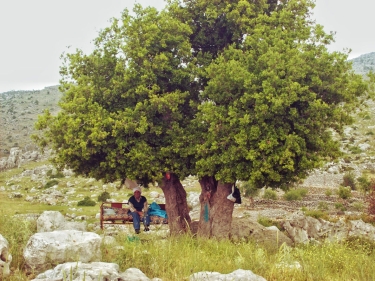‘10 Must-Knows’ as guide for preserving biodiversity

New policy report with chapter on integrating biodiversity conservation with forest management
From yet undiscovered biodiversity to resilient forests and the impact of food consumption on nature: 64 experts have now pooled their knowledge and recommendations and published them in the form of “10 Must Knows from Biodiversity Research” for 2024. The new report from the Leibniz Biodiversity Research Network shows policymakers and society concrete ways in which biodiversity in Germany can be effectively conserved and used sustainably at local, national and European level, and how this can also protect the climate. One of the 10 Must-Knows specifically refers to the management of forests and is co-authored by scientists from the European Forest Insitute (EFI) in Bonn. With this new publication, the researchers contribute current scientific facts to the debate on the German National Biodiversity Strategy 2030, which is to be adopted before the next United Nations Biodiversity Conference (CBD COP 15) in autumn 2024.
Following the great response to the first “10 Must Knows from Biodiversity Research” published in 2022, scientists from a total of 52 German and international research institutions have now contributed their expertise from the environmental, life, spatial, social, humanities and economic sciences to the new version.
“We are already exceeding planetary boundaries, both in terms of global warming and biodiversity loss. Joint responses are needed to counter these crises. We know that preserving biodiversity can significantly contribute to mitigating climate change, for example through biodiverse forests and rewetted peatlands that can act as carbon sinks. Only by focusing on measures to protect biodiversity can we succeed in tackling both crises at the same time,” says Kirsten Thonicke, lead author and Deputy Head of Research Department “Earth System Analysis” at the Potsdam Institute for Climate Impact Research (PIK), who coordinates the research network.

In chapter 5, ‘Harmonising the diverse use of forest ecosystems and biodiversity conservation’, seven scientists from five different research institutions, focus on the integration of biodiversity concerns and socio-economic demands to forests.
“We should adapt our management practices and spatial planning in a way that reconciles the diverse use of forest ecosystems with biodiversity conservation. This will enable us to counter the increasing negative impacts of climate change in forests while resolving trade-offs between competing forest-related policy objectives,” says lead author Mats Nieberg, researcher at PIK and EFI.
Synergetic practices strengthen biodiversity and make forests more resilient to climate change and disturbance regimes, thus contributing to global climate adaption and mitigation strategies. Ecological and economic approaches should be integrated rather than seen as opposing forces. For this, the researchers refer to the notion of ‘sustainable multifunctional forest management’ and recommend policymakers the following:
- Coordinate forest, climate, biodiversity, bioeconomy and other policies to foster policy integration and coherence on different spatial scales to align forest ecosystem service provisioning, disturbance risk management and biodiversity conservation.
- Participatory decision-making in public forests and incentives for private forest owners boost the integration of biodiversity-enhancing measures into forestry practice.
- Domestic demand for wood products, wood supply as well as wood imports and exports need to be balanced to avoid biodiversity losses by increased harvests either domestically or internationally.
Equally, they develop recommendations for societal actors, related to awareness-raising and sensitization strategies.

Managed forest with deadwood and structural diversity in Aachen, NRW (Photo: Gesche Schifferdecker)
To implement the 23 global biodiversity framework targets agreed by United Nations member states at the UN Biodiversity Conference in December 2022 (COP 15), the German Biodiversity Strategy 2030 is currently being developed. The strategy aims to preserve and protect biodiversity in Germany. In order to provide up-to-date facts from the scientific community, the first version of the “10 Must Knows” from 2022 was thus expanded to include numerous new aspects and brought up to date with the help of current literature.
The “10 Must Knows from Biodiversity Science 2024” are:
1. Achieving climate and biodiversity protection together
2. Enabling a healthy life on a healthy planet
3. Considering undiscovered biodiversity
4. Linking linguistic, cultural and biological diversity
5. Harmonising the diverse use of forest ecosystems and biodiversity conservation
6. Transforming agricultural and food systems
7. Protecting land and resources
8. Releasing transformative change through international collaboration and Education for Sustainable Development
9. Ensuring free access and open use of biodiversity-related data
10. Reducing biodiversity impacts from food consumption
Click here to access the report and download the 10MustKnows24

This text is partly based on the press release of the Potsdam Institute for Climate Impact Research (PIK).


